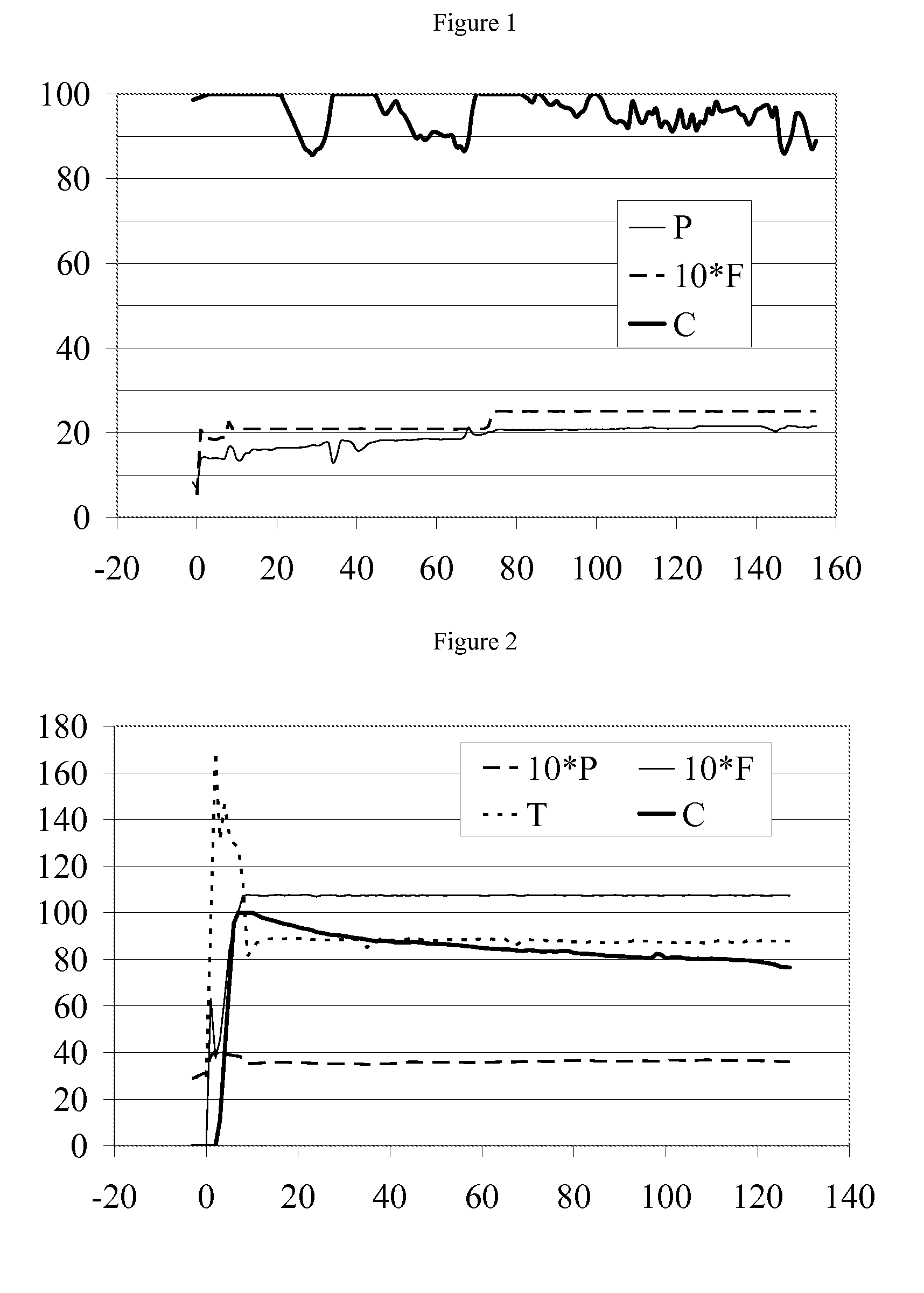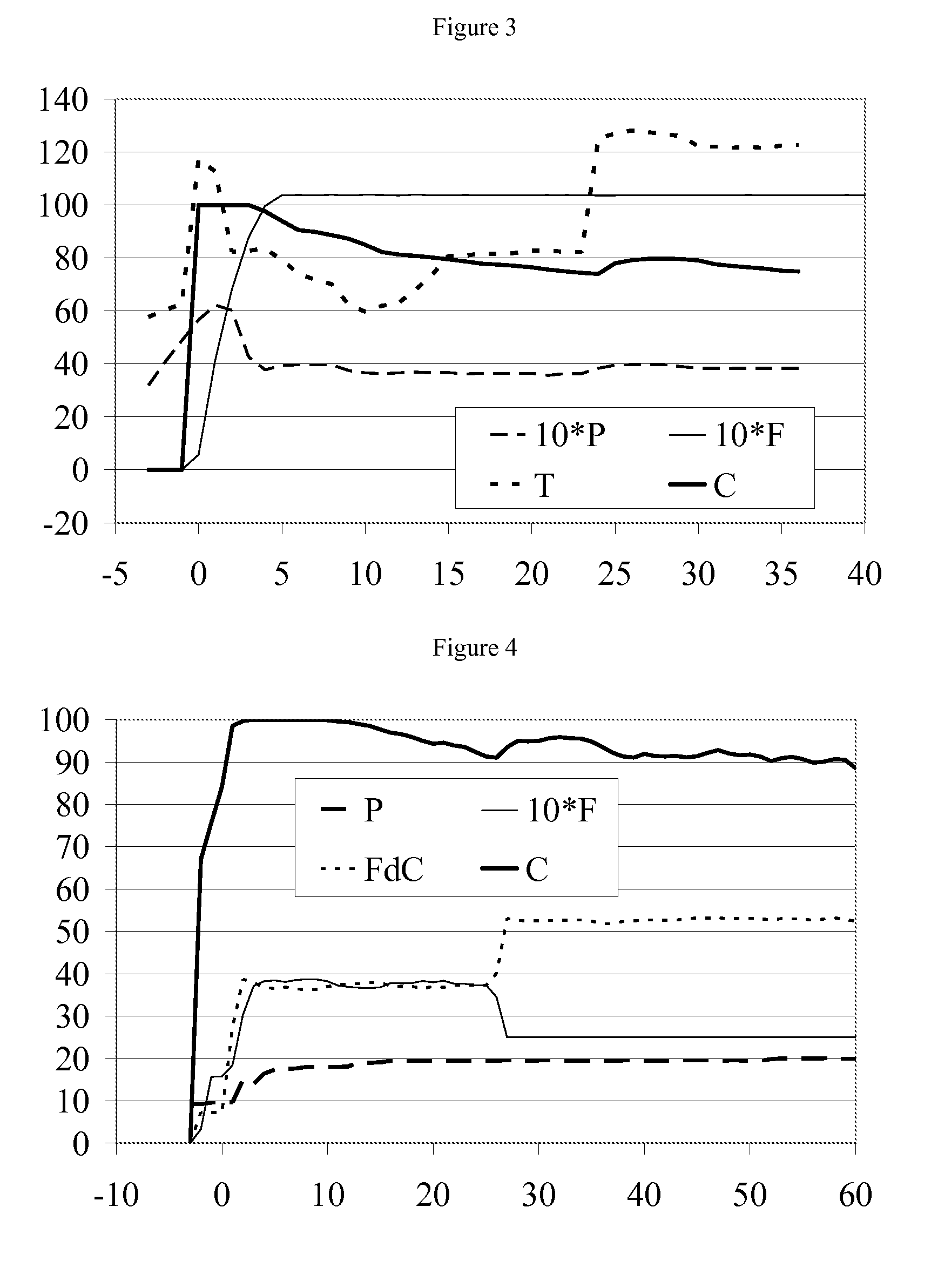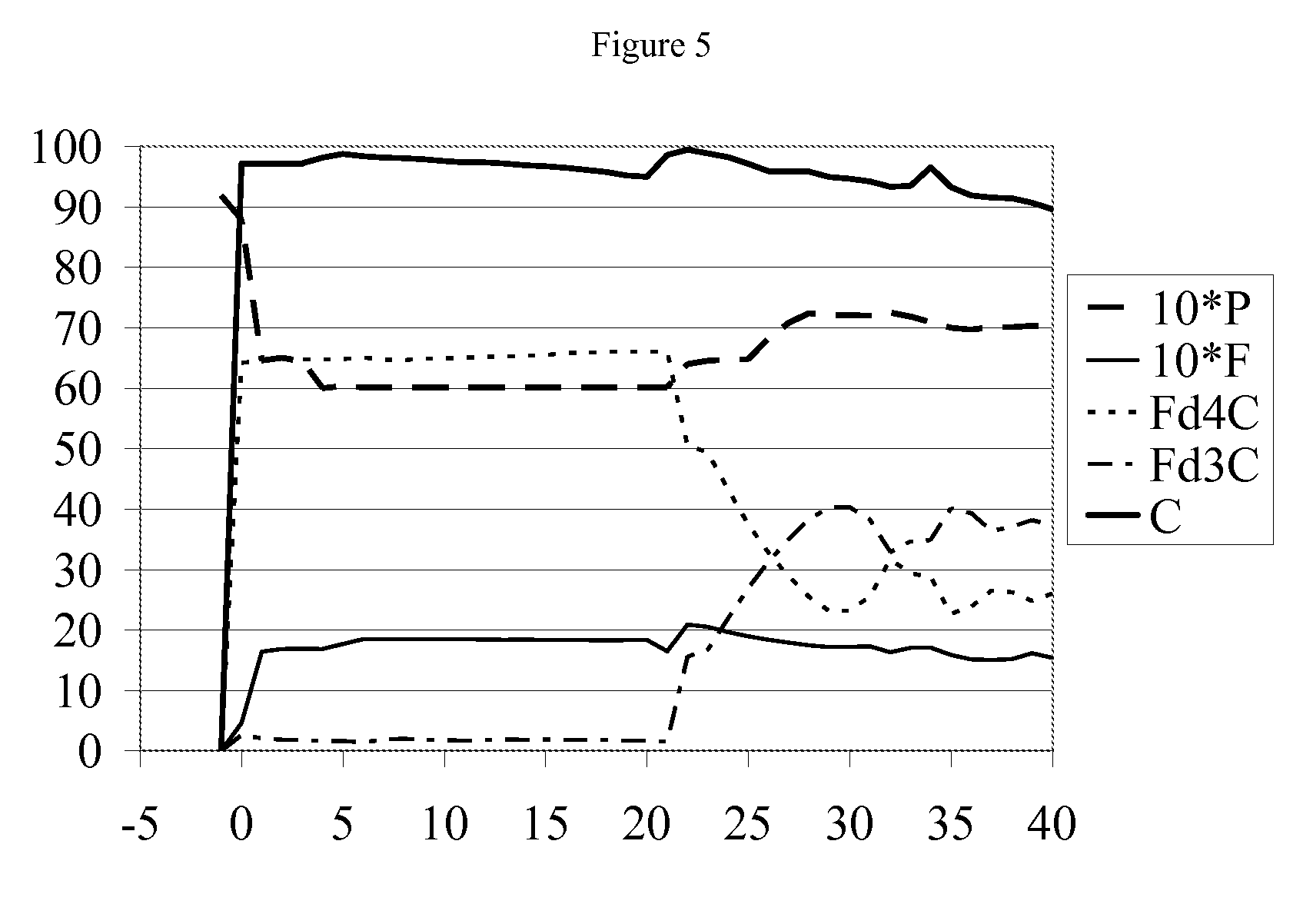Oligomerisation process
a technology of oligomerisation process and zeolite, which is applied in the preparation of physical/chemical process catalysts, hydrocarbon oil treatment products, etc., can solve the problems of zeolite oligomerisation catalyst, inadequacies of conventional tubular reactor start-up methods, and more damage to the molecular structur
- Summary
- Abstract
- Description
- Claims
- Application Information
AI Technical Summary
Benefits of technology
Problems solved by technology
Method used
Image
Examples
example 1
Comparative
[0074]The tubes of a tubular reactor were loaded with freshly regenerated acidic zeolite catalyst, whereby in the direction of the process flow a first layer of H-ZSM-22 based catalyst preceded a second layer of H-ZSM-57 based catalyst, and whereby the first layer occupied from 40-52% of the volume of the total catalyst bed, on average about 46%. Boiler feed water was introduced into the steam drum connected to the reactor shell side, and into the shell side of the reactor, and a normal liquid level was established in the steam drum. The reactor was preheated to 200° C. by introducing 20 barg saturated steam into the shell side of the reactor. At time 0 hrs, regular olefin feed with the composition given in Table 1 was introduced into the process side of the reactor.
[0075]
TABLE 1Feed (Wt %)TypicalRangeEthane and Ethylene5.705.00-6.40Propane20.4018.90-22.40Propylene52.5850.50-54.80Butane + Isobutane19.1516.50-21.70Trans Butene-20.780.50-1.10Cis Butene-20.660.50-0.80Isobute...
example 2
[0078]The tubes of a tubular reactor were loaded with freshly regenerated acidic zeolite catalyst of the type H-ZSM-57. Boiler feed water was introduced into the steam drum connected to the reactor shell side, and into the shell side of the reactor, and a normal liquid level was established in the steam drum. The reactor was preheated to 135° C. by introducing 40 barg saturated steam into the shell side of the reactor. At time 0 hours, feed with the composition as given in Table 2 was introduced into the process side of the reactor, and which feed was preheated as stated below.
[0079]
TABLE 2Feed (wt %)TypicalRangePropylene0.070.07-0.10Butane47.0543.61-48.61n-Butenes (Butene-1, cis39.2437.64-44.84and trans Butene-2)Isobutane13.4212.31-13.82Isobutene0.150.13-0.18Pentenes0.070.05-0.10Total100.00
[0080]The feed was introduced at a rate equivalent to a weight hourly space velocity (WHSV) in the range of 9-11 (tons / ton / hr or h−1), which is the target for early run conditions on this feedsto...
example 3
[0081]The tubes of a tubular reactor were loaded with freshly regenerated acidic zeolite catalyst, whereby in the direction of the process flow a first layer of H-ZSM-22 based catalyst preceded a second layer of H-ZSM-57 based catalyst, and whereby the first layer occupied from 40-52% of the volume of the total catalyst bed, on average about 46%. Boiler feed water was introduced into the steam drum connected to the reactor shell side, and into the shell side of the reactor, and a normal liquid level was established in the steam drum. The reactor was preheated to 135° C. by introducing saturated 40 barg steam at the shell side of the reactor. At time 0 hours, olefin feed with the composition as given in Table 3 was introduced, and which was preheated to as stated below.
[0082]
TABLE 3Feed (wt %)TypicalRangePropylene0.080.07-0.13Butane42.2341.23-44.23n-Butenes (Butene-1,48.2646.76-50.92cis and trans Butene-2)Isobutane9.159.0-9.5Isobutene0.180.17-0.19Pentenes0.100.08-0.17Total100.00
[0083...
PUM
| Property | Measurement | Unit |
|---|---|---|
| temperature | aaaaa | aaaaa |
| temperature | aaaaa | aaaaa |
| temperature | aaaaa | aaaaa |
Abstract
Description
Claims
Application Information
 Login to View More
Login to View More - R&D
- Intellectual Property
- Life Sciences
- Materials
- Tech Scout
- Unparalleled Data Quality
- Higher Quality Content
- 60% Fewer Hallucinations
Browse by: Latest US Patents, China's latest patents, Technical Efficacy Thesaurus, Application Domain, Technology Topic, Popular Technical Reports.
© 2025 PatSnap. All rights reserved.Legal|Privacy policy|Modern Slavery Act Transparency Statement|Sitemap|About US| Contact US: help@patsnap.com



